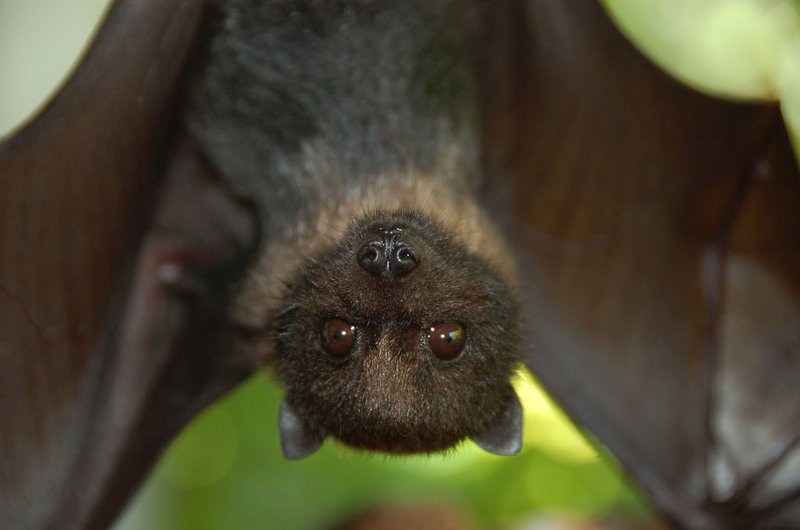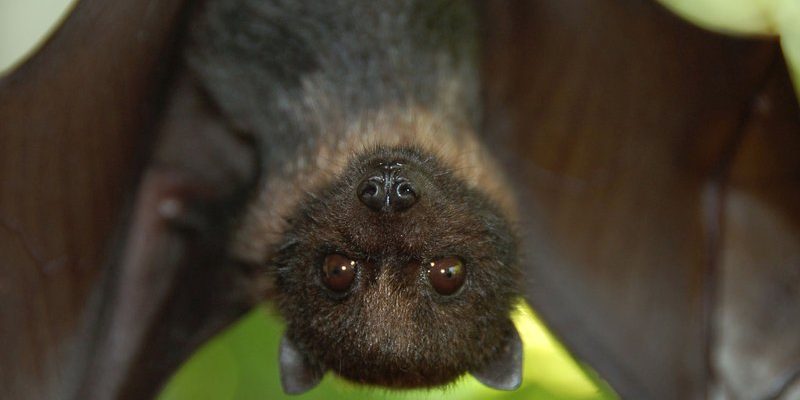
In this article, we’ll explore 10 animals similar to the fruit bat. We’ll dive into their unique features, habitats, and how to tell them apart. It’s like being on a wildlife safari without leaving your couch! So, let’s flap our wings and get started.
1. Flying Fox
The flying fox is often mistaken for the fruit bat because, in a way, they are. In fact, *Pteropus* species, commonly known as flying foxes, are a part of the fruit bat family. They make an appearance in tropical and subtropical regions, often hanging out in large colonies in trees.
What sets flying foxes apart is their size. Some can have a wingspan of over five feet! That’s like having a small dog flying around your backyard. They primarily feed on fruits, nectar, and flowers, making them essential for the health of ecosystems. If you spot a bat and it seems unusually large and has a fox-like face, it’s likely a flying fox.
2. Common Fruit Bat
The common fruit bat, or *Plecotus auritus*, is another relative of the fruit bat that deserves a mention. These bats are smaller, usually weighing about 0.5 to 1 pound, and have shorter wings. Though they share a diet of fruits, they also enjoy pollen and leaves.
You might notice that common fruit bats have a distinctive brownish-grey color with a fur texture that’s quite soft. They’re primarily found in Africa and Asia, roosting in large groups. If you’re lucky enough to see one up close, check out those big ears! They have an adorable way of using them to locate food in the dark.
3. Vampire Bat
Now, this one is a bit different. The vampire bat, or *Desmodus rotundus*, is notorious for its blood-sucking habits. Unlike the fruit bat, vampire bats primarily feast on the blood of other animals. They are smaller, about 3 to 4 inches long, and have a more streamlined shape, which helps them fly silently.
You can find them mostly in Central and South America. They usually roost in caves or abandoned buildings. If you ever come across one, you’ll notice how their heads are shaped differently, almost like they have a little snout. So if you’re picturing a cute fruit-eating buddy, this one might not fit the bill!
4. Spectral Bat
The spectral bat, *Vampyrum spectrum*, has a reputation for being one of the largest bats in the Americas. They have a wingspan that can reach up to 2 feet! Unlike fruit bats, these guys are carnivorous and often prey on small birds and mammals.
You can tell them apart by their distinctively large ears and short snouts. Their fluffy fur is usually a mix of grey and brown, which helps them blend into the canopy of trees. If you’re in Central or South America, and you hear a screeching sound, it might be a spectral bat hunting for dinner.
5. Orange Fruit Bat
The orange fruit bat, or *Plecotus auritus*, is notable for its striking coloration. This bat is primarily found in parts of Southeast Asia and is often recognized by its vibrant orange fur. Generally, they have a similar diet to that of the common fruit bat, but with a preference for ripe fruits.
These bats roost in tree hollows, and their vibrant color makes them stand out among the green foliage. You might catch a glimpse of their bright orange fur during sunset, where they seem to glow against the twilight sky.
6. Egyptian Fruit Bat
The Egyptian fruit bat, or *Rousettus aegyptiacus*, is another interesting relative. Found mainly in Africa and parts of Asia, these bats have a unique look with their larger bodies and rounded faces. They tend to roost in large colonies, sometimes in caves or abandoned buildings, much like their fruit bat cousins.
What makes the Egyptian fruit bat unique is its reliance on echolocation. They produce clicks to navigate and find food, which is quite different from how fruit bats generally forage. If you happen to see one, pay attention to its distinctive facial features and larger size compared to standard fruit bats.
7. Indian Flying Fox
The Indian flying fox is another impressive relative of the fruit bat. It can grow up to 3 feet in length, making it one of the largest bats in India. You can find them in forests and urban areas, where they thrive on fruits like mangoes and guavas.
Their fur is a mix of browns and golds, giving them a stunning appearance. You might notice that they have a much longer snout compared to fruit bats. If you see one soaring above, it’s hard not to admire their size and grace in flight.
8. Leaf-Nosed Bat
Leaf-nosed bats, belonging to the *Hipposideridae* family, are known for the small leaf-like structures on their noses. These bats are quite diverse, with several species spread across Asia and Africa. While they enjoy a diet of fruits, they also consume insects, making them more versatile.
The leaf-nosed bat can be distinguished by its unique nose structure, which helps it navigate through dense foliage. They often roost in caves and tree hollows, and their presence is crucial for controlling insect populations. Their cute, floppy ears add to their charm!
9. Little Brown Bat
The little brown bat, or *Myotis lucifugus*, is a small insectivorous bat that you might find in North America. While it doesn’t share the same fruit-loving diet as the fruit bat, it’s essential for the ecosystem because it helps control pests like mosquitoes.
They usually weigh less than half an ounce and have a wingspan of 9 to 11 inches. These bats are distinct because of their brown fur and small size, easily distinguishing them from their larger fruit-eating cousins. If you spot one flitting around at dusk, it’s working hard to keep the insect population in check!
10. Honduran White Bat
Finally, the Honduran white bat is a little gem! With its strikingly white fur and yellow face, this bat is hard to miss. These guys are relatively small and are found exclusively in Central America. Unlike fruit bats, their diet focuses on fruits and insects.
They often roost under the large leaves of banana trees, which provide excellent camouflage while they sleep. You might find them hanging upside down, and their white fur makes them look almost mythical against the green foliage.
In summary, while fruit bats are charming and vital creatures, they share their world with several other bat species, each unique in its own right. Whether they’re giant flying foxes or tiny Honduran white bats, each plays a role in our ecosystems.
So, the next time someone mentions fruit bats, you can impress them with your knowledge of these other fascinating animals. Who knew the bat family was so diverse? It’s like a hidden world of wonders fluttering just above us!

